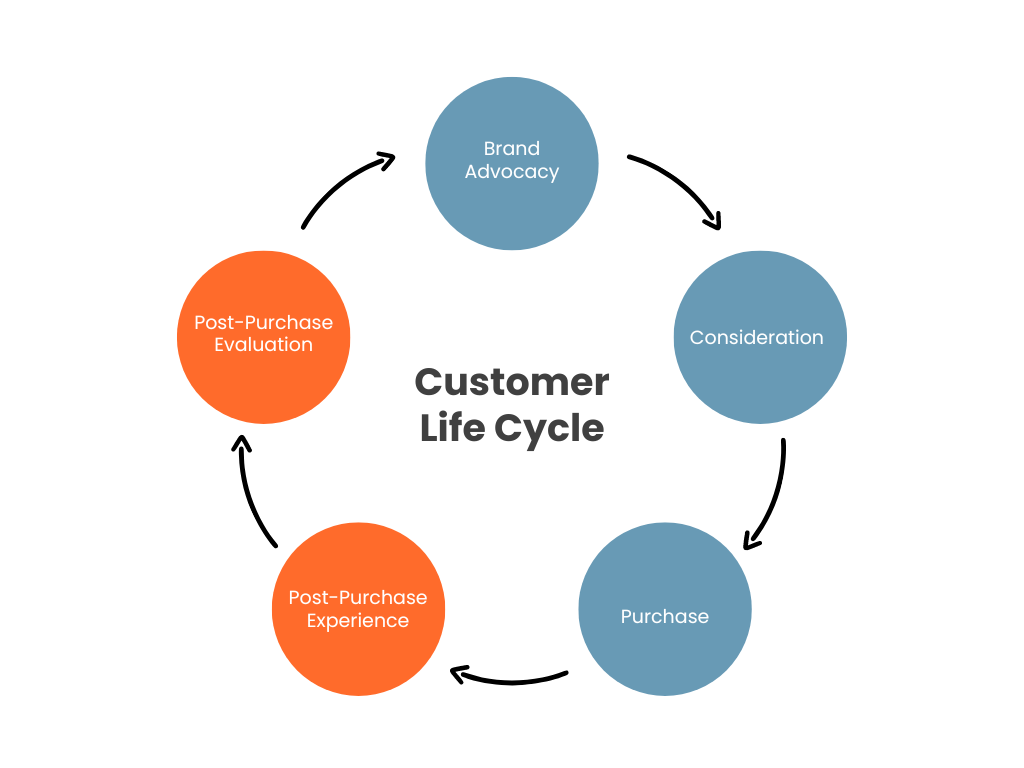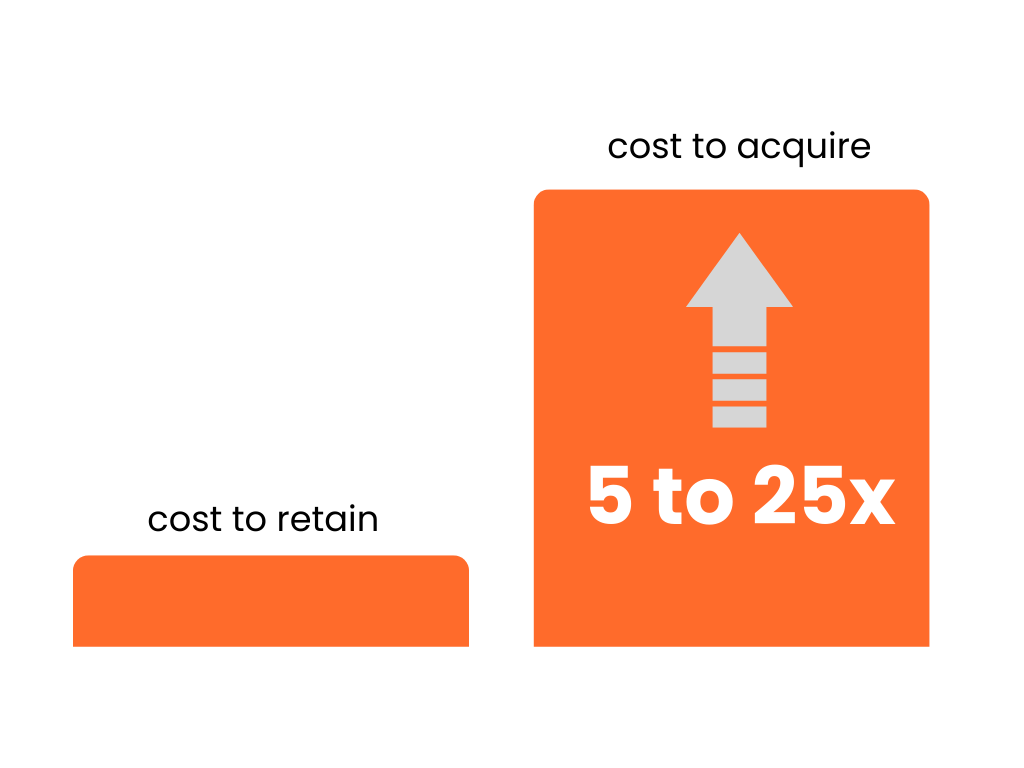What is Post-Purchase Evaluation?

Do you know what your customer does after they purchase from you? If not, you're not alone. In fact, post-purchase evaluation is often overlooked by eCommerce retailers. In the rush to secure more sales, merchants often pay less attention than they should to the impact that what happens afterward can have on customer relationships, brand reputation, and bottom line.
But here's the thing: post-purchase evaluation is a crucial stage in the customer journey. It's when your customers decide whether or not they're going to continue doing business with you. It's the moment they can become loyal customers willing to make repeat purchases—or not. (Cue the sad trombone.)
That's why it's so important to make sure you're doing everything you can to support your customers during this stage. In this blog post, we'll discuss post-purchase behavior, why it's essential, and some best practices that eCommerce retailers can use to improve their business by exceeding customer expectations.
Ready to dive in? First, let's answer a few questions.
What is post-purchase evaluation?
Post-purchase evaluation is the critical stage of the buyer journey when a customer assesses the quality of a product or service after purchase. Whether conscious or unconscious, all purchase decisions will leave an impression of both product quality and the overall customer experience.
These impressions can be captured through soliciting customer feedback via surveys, online reviews, and other methods. Knowing how buyers evaluate the quality of your products and services is important for two main reasons: first, it helps you identify areas where you can improve your offerings. And, second, it allows you to gauge customer satisfaction and loyalty.
Both of these factors are important for the success of your business. After all, happy customers are more likely to continue doing business with you, while unhappy customers will take their business elsewhere.

What is post-purchase behavior?
Post-purchase behavior refers to the actions and decisions that customers make after they've made a purchase. This includes everything from evaluating the quality of the product, leaving positive or negative reviews, requesting returns, or determining whether or not they're going to continue doing business with you. Unchecked, feelings of buyer's remorse or post-purchase dissonance can shape what a customer will do next.
For example, let's say that a customer purchases a swanky new shirt from your online store. Once they receive the shirt, they try it on and decide that it doesn't fit quite right or the color clashes with their eyes. In this case, their post-purchase behavior would involve returning the shirt for a refund or exchange.
Another example might be a customer who is entirely happy with their purchase and immediately decides to leave a positive review on your website. This customer's post-purchase behavior is helping you to market your business to other potential customers by providing social proof.
It's not a simple binary of being happy or unhappy, however. A third example would be a customer who returned a product but had such a fantastic post-purchase experience that they recommend your brand to friends and family, even if it wasn't the right choice for them. On paper, this post-purchase behavior might look like a simple revenue loss (and, yes, minimizing returns is always wise), but these types of customers might also become powerful brand advocates.
All of these little actions and decisions that your customers make after they purchase from you add up to create a post-purchase experience. And this experience can have a big impact on your business.
Why is post-purchase behavior important?
Post-purchase behavior is important for two main reasons: customer retention and customer acquisition.
Let's start with customer retention.
Your existing customers are your bread and butter. They're the ones who keep your business going, day in and day out. That's why it's so important to keep them happy and ensure they continue doing business with you. If you foster brand loyalty by ensuring positive experiences (or through more direct means like loyalty programs), you also increase the likelihood of repeat purchases.
While a product's performance has the most vital role, post-purchase behavior is also a big part of whether people stick with you. If your customers have a positive post-purchase experience, they're much more likely to continue doing business with you. On the other hand, if they have a negative experience, they're liable to take their business elsewhere.
This leads us to customer acquisition.
Acquiring new customers is vital for any business, but it's especially important for eCommerce businesses. That's because the cost of acquiring a new customer is often higher than the cost of retaining an existing customer. (Depending on what study you believe, it's somewhere between 5 and 25 times more expensive to convert potential buyers than it is to sell to existing ones.)

So, if you can use post-purchase behavior to keep your customers happy and encourage them to continue doing business with you, you can save a lot of money in the long run.
Why is post-purchase evaluation important?
As we mentioned before, post-purchase evaluation is important for two main reasons: it helps you improve your products and services, and it allows you to gauge customer satisfaction.
Improving your products and services
The first reason is relatively self-explanatory. Assessing the quality of your products and services after they've been purchased helps you to identify any areas where you can make improvements.
This feedback can come from customers, surveys, online reviews, and other sources. It's essential to take this feedback seriously and use it to change your offerings. If you don't, you risk losing customers to your competition. After all, if they can't find what they're looking for from you, they'll go somewhere else.
Gauging customer satisfaction
The second reason is that post-purchase evaluation allows you to gauge customer satisfaction. This information is essential for many reasons.
First, it can help you identify areas where your customers are unhappy. Second, it can help you to track your progress over time. And third, it can be used to create marketing and advertising campaigns that target specific segments of your customer base.
Customer satisfaction is important for the success of any business. After all, happy customers are more likely to continue doing business with you, while unhappy customers will take their business elsewhere.
That's why it's so important to monitor customer feedback and make changes to your products and services accordingly. By doing so, you can ensure that your customers are happy and that they'll continue to do business with you for years to come.
How can you improve your post-purchase evaluation process?
Now that we've gone over why post-purchase evaluation is important, let's take a look at some ways you can improve your own process.
1. Use customer feedback to make changes to your products and services.
As we mentioned before, customer feedback is a valuable resource that can be used to improve your products and services. If you're not already using this feedback to inform your decisions, now is the time to start. Typical questions you may want to ask to understand their perspective are:
Product Questions
- How satisfied are they with your product or service?
- What do they like or dislike most about our product?
- What made them choose your product over competitors?
- Does your pricing seem fair? Or are they feeling buyer's remorse? Why or why not?
- What's one thing you could do to improve your product?
Purchase Questions
- How did they find out about your product or service?
- What was the experience finding the product on your website? (You can also run separate surveys of web visitors.)
- Were there any details they wish they'd had when making a purchase decision?
- How was the checkout experience?
Post-purchase Questions
- Was the shipping and tracking experience what they expected?
- If they had issues, were these issues resolved promptly?
- How responsive was customer service?
- If they requested a return, are they satisfied with the resolution?
The various tools that today's eCommerce merchants use (like Shopify or AfterShip) provide analytics that can help you get an overall sense of how your operations are performing, tracking metrics like return rates (RMAs) to ensure the processes are working smoothly. But direct customer feedback can often illuminate real, experiential problems that the data itself will not reveal. It's recommended that you look at both when working to improve post-purchase experience.
2. Create a system for tracking customer feedback.
Creating a system for tracking customer feedback will help you to identify patterns and trends. This information can be used to make changes to your products and services. Many modern CRMs let you centralize customer feedback for deeper analysis. But smaller merchants (without a CRM) might rely on a spreadsheet.
3. Use surveys, interviews, and focus groups to collect customer feedback.
Surveys, interviews, and focus groups are all great ways to collect customer feedback. By using a variety of methods, you can gather detailed information about your customers' needs and wants. Today, many widgets, apps, and notification tools can all also be used to ask for quick, in-the-moment responses while the experience is still fresh in your customer's mind.
For instance, if you're trying to optimize your checkout flow for customer satisfaction, the best time to ask is immediately after the customer has checked out.

4. Monitor online reviews and social media mentions.
Online reviews and social media mentions can give you a pulse on how your customers are feeling about your products and services. This information can be used to make changes to your offerings. Social media listening can be particularly invaluable, as customers might express opinions about your brand in social media channels that they wouldn't in a survey or during a focus group.
5. Keep an eye on your competition.
Keeping tabs on what your competition is doing (and how your customers are reacting to it) can give you valuable insights into the market. This information can be used to make changes to your products and services. You can use many of the same methods above, including asking questions about your competitors during focus sessions or on surveys.
6. Increase communication with customers post-purchase.
Increasing communication with customers post-purchase can help to build relationships and trust. This, in turn, can lead to repeat business and brand loyalty. Using tools like AfterShip to automate post-purchase communication can help to make this process easier.
For example, you can use AfterShip to send automated Thank You emails, track orders, and update customers on their shipments. This can help to increase customer satisfaction and build loyalty.
Post-purchase communication is especially important if the customer is having trouble. If something goes wrong, use clear, empathetic language and respond as quickly as your resources allow to ensure they have a positive experience. Sometimes a bad experience (a product getting broken in shipping) can be turned into a memorable one (the product is replaced with a little bonus and a personalized note from your team.
7. Implement solutions based on feedback from customers.
After tracking and analyzing the feedback, ideally, you will implement solutions based on the gathered insights. Understanding customers' experiences and perspectives will enable you to enhance your products and services to suit their demands and needs.
In the eCommerce world, changes may involve improving product quality, adjusting prices, or amending services. They might include improving workflows or acquiring new tools to help you serve your customers better.
When possible, announce these updates to the customers impacted most. The aim is not just to improve for future customers, but also to show existing customers that their feedback is valued and has a positive impact on your business development. Continuous improvements based on customer feedback will not only enhance client satisfaction but also foster loyalty and promote positive word-of-mouth.
Other common questions about post-purchase experience
Still have questions? Explore these additional resources about post-purchase experience, including tracking, shipping, and returns:
- Are free returns dead? (And if not, why not?)
- How do you create a customer-centric returns experience?
- How do you write engaging notification emails?
Post-purchase evaluation is important for eCommerce businesses
As you can see, post-purchase evaluation is important for eCommerce businesses. By making sure your products are high quality, your shipping is fast and efficient, and your customer service is top-notch, you can improve post-purchase behavior and keep your customers happy.
Tools like AfterShip can revolutionize the post-purchase process and make it easier than ever to keep your customers satisfied. It all starts with making sure your customers are happy with their purchase.
You can take a few steps toward this goal by jumping into a free trial of AfterShip today!

